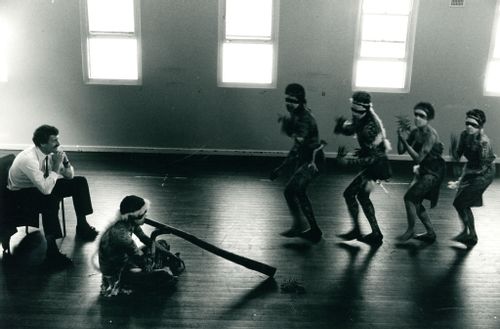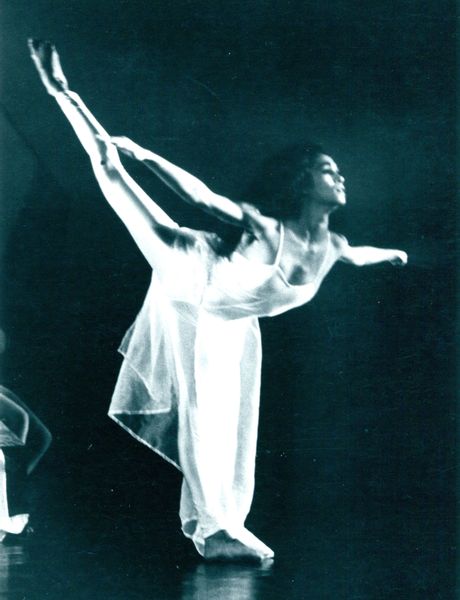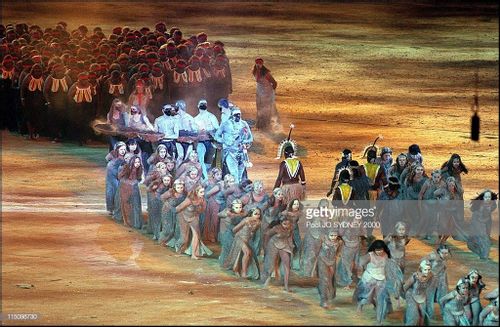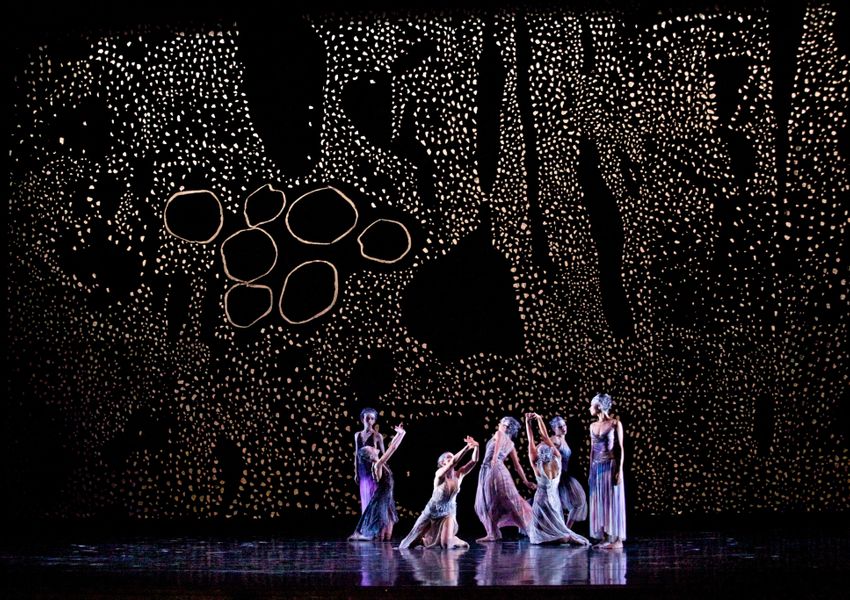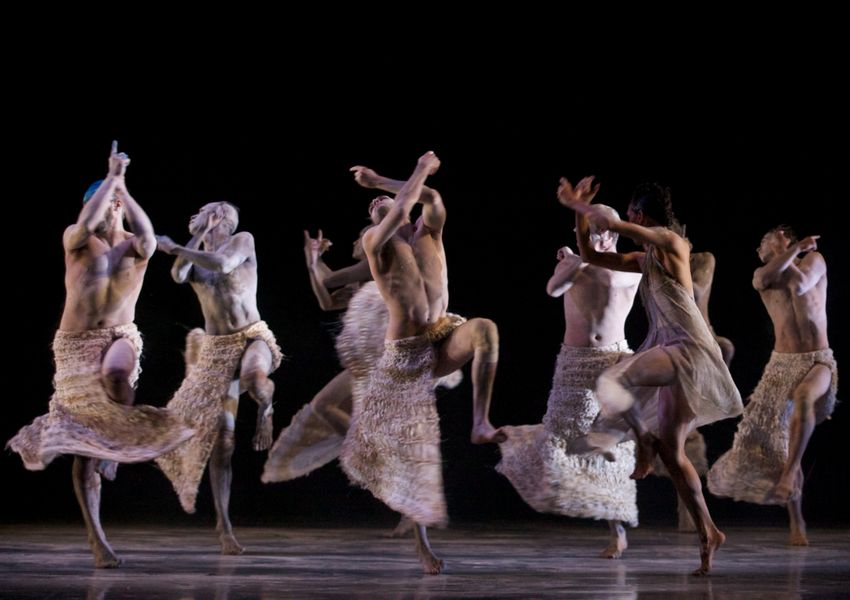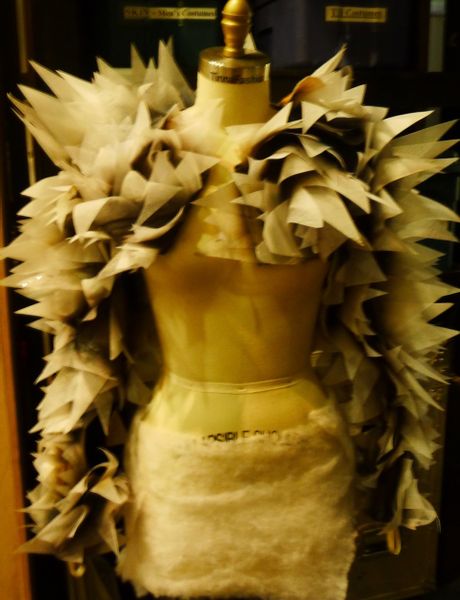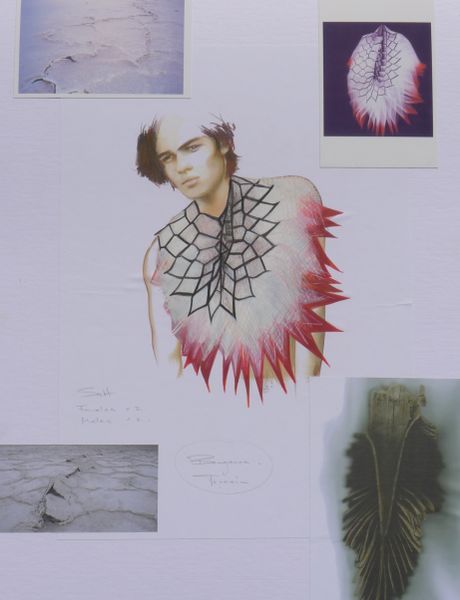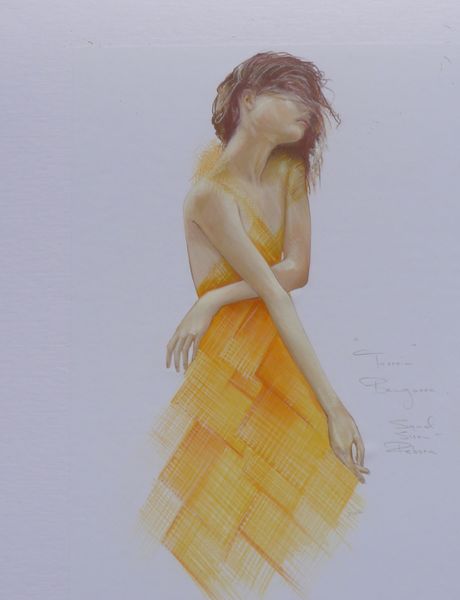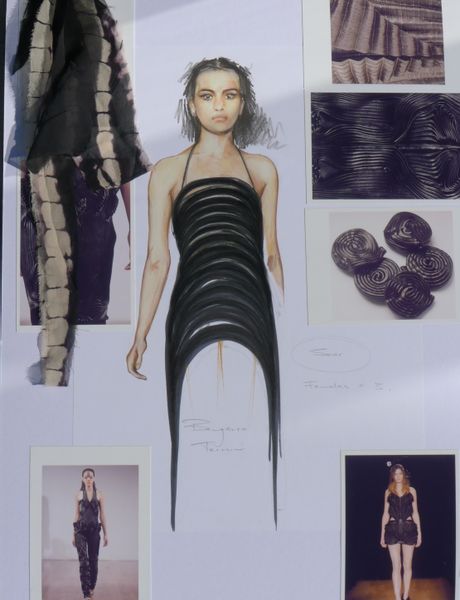With Warumuk Stephen was integrating Australian Ballet and Bangarra dancers together, with costumes being built by the Australian Ballet wardrobe. Working with a big company like that, it’s a much more regimented process.
Usually with Bangarra when you're making costumes, everything's floor based, knee based. Total destruction! When you're designing for Bangarra, it needs to be washable, it needs to be something that people can roll around in. I always design costumes where it doesn’t really matter if they fall apart.
It's always a delight if Stephen says, "Oh, no there's no partnering in this section,” or “I'm doing a solo and they're not on the ground." It means you can have more material. You can do beautiful, long dresses if the dancers are up from their feet instead of crawling around the ground.
Waramuk was a series of stories from the night sky. There was the evening star, which was layers of shimmering fabric and beaded lace. The morning star was all pastels and floaty, silk chiffon. In one section all the boys wore skirts in a crochet knit of shredded silk. (I mean, how many skirts can you make for a man in your life. Stephen loves a skirt on a guy. He loves them. I've made hundreds of them.)
The costumes were all absolutely beautiful, but I wouldn’t have been able to do them here. You need the support of a big company with an entire wardrobe department to actually build them.

